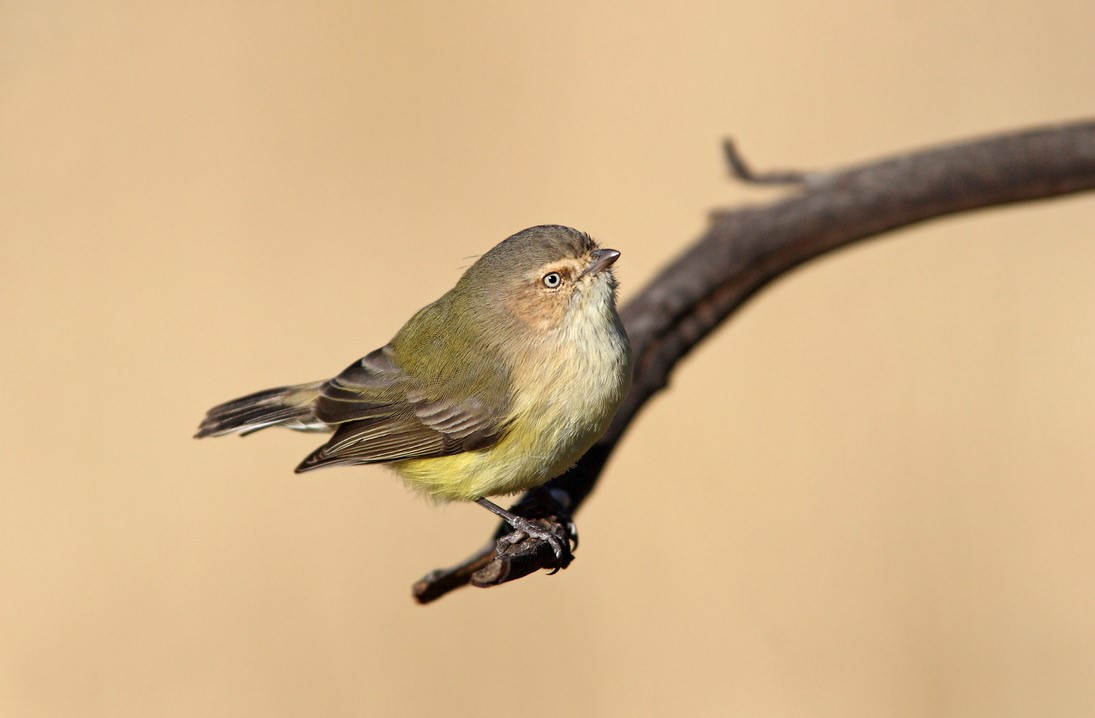By Ian Davidson and Chris Tzaros – Wangaratta Landcare & Sustainability
The Weebill is Australia’s smallest bird, measuring just 8-9 cm. The name Weebill comes from its relatively short beak. However, its song sounds like a musical ‘weebill’, so maybe this describes both its beak and its song? These tiny birds are commonly found throughout timbered parts of our region, but because of their small size and tendency to forage high in the crown of trees, it is less often seen than heard.
In appearance their eye is pale cream, and there is a pale “eyebrow” line above the eye. Weebills are dull grey-brown on the head and olive-brown on the back, and the underparts are buff to yellow. Both sexes are similar in colouration, and young birds can be separated from the adults by their greyer eyes. There are similar looking small species known as thornbills with which Weebills can be easily confused, but whilst they differ in behaviour and appearance, the easiest way to tell them apart is by their unique calls.
The Weebill inhabits almost any wooded area, with the exception of the wettest mountain forests, but favours open eucalypt forests and woodlands. It spends the most time in the canopy, in pairs or small groups. The birds stay in the same area throughout the year. Weebills move in active flocks, feeding mainly in the outer edges of the tops of trees. Their small bill is well suited to taking small scale insects from the leaves along with other insect prey. At times Weebills forage in small flocks with other small insect feeding birds including thornbills, treecreepers and fantails.
The Weebill’s nest is a neatly woven dome, made from grasses and other fine vegetation. It has a narrow spout-like entrance towards the top. The interior of the nest is lined with feathers and soft vegetable matter. The female alone incubates the eggs, but both parents care for the young birds.
Weebills are commonly heard throughout our region foraging in small flocks amongst the redgums lining our waterways and box woodlands wherever significant remnant treecover occurs. For those wishing to find Weebills, we suggest you familiarise yourself with their unique musical call by listening to a taped call, and once confident, use binoculars to locate the birds.

Photo: The tiny Weebill by Chris Tzaros of Birds Bush and Beyond
